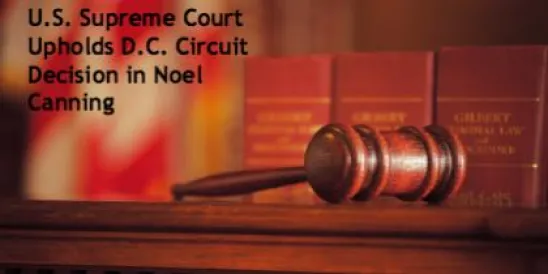In O’Boyle v. Borough of Longport, _N.J._ (July 21, 2014), the New Jersey Supreme Court recognized the common interest doctrine, which protects attorney-client communications and attorney work product materials shared outside of the attorney-client relationship with a party having a common interest. Those kinds of communications often occur among attorneys who are defending against common claims—as were the municipal attorney who had defended against civil lawsuits brought by O’Boyle and the private attorney representing several municipal officials sued by O’Boyle. Other typical circumstances include communications between the attorney for a party defendant and the attorney for its liability insurance carrier or indemnitor.
The Supreme Court reasoned that protection of information shared under such circumstances “permit[s] the free flow of information between or among counsel who represent clients with a commonality of purpose” and “offers all parties to the exchange the real possibility for better representation by making more information available to craft a position and inform decision-making in anticipation of or in the course of litigation.” Slip op. at _. Until O’Boyle, those who sought to invoke the common interest protection over such shared material had to rely on a 2001 Appellate Division case, LaPorta v. Gloucester Cnty. Bd. of Chosen Freeholders, 774 A.2d 545 (App. Div. 2001). Under the standards announced in O’Boyle, the common interest doctrine will protect the disclosure of information as long as:
(1) The disclosure was made in connection with actual or anticipated litigation. The disclosure may be for the purpose of considering whether participate in a common interest arrangement.
(2) The parties share a common purpose with respect to the actual or anticipated litigation, but the parties need not have an identical interest and need not even be involved in the same litigated matter.
(3) The disclosure is made in a manner intended to preserve the confidential nature of the shared material. Thus, attorney-client privileged information or work product material may be made to an attorney for another party who shares in the common purpose.
Despite these standards, it is open to question whether, on different facts, the court’s decision would have been even broader. Although O’Boyle relied on the Restatement (Third) of the Law Governing Lawyers §76(1)(2000), the decision does not go as far as the Restatement, which recognizes the common interest doctrine even in non-litigation contexts and even among clients. The court was not presented with a non-litigation scenario in O’Boyle so it is possible that the court could expand the common interest doctrine in such circumstances. In addition, O’Boyle limits the common interest protection to communications shared among attorneys. Other jurisdictions have divided over whether to protect common interest communications that are shared among clients. When and if the court is presented with a different set of facts, it may well conclude that the rationales supporting the common interest doctrine justify expanding the doctrine to those circumstances.



 />i
/>i

